By Jeffrey A. Rendall, Images courtesy of Nike Golf
BEAVERTON, OR – Rory McIlroy has all but locked up Player of the Year honors for 2014, and Nike Golf’s drivers and fairway woods have certainly helped him do it.
Everyone with a TV knows McIlroy’s a big star, enjoying a Tiger Woods-ish season this year. What’s probably just as noteworthy as his on-course accomplishments is what he’s needed to overcome to achieve that big year.
There have been the well-discussed personal obstacles that we need not go into here. There’s also been a management company change to leave behind. And then there’s his equipment. McIlroy switched to Nike at the beginning of 2013, and… he struggled.
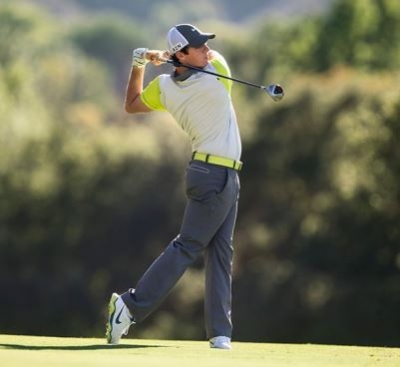 |
Don’t blame the golf clubs, as his recent hot streak revealed – they work great. Rory is known for his long game, and his Nike VRS Covert 2.0 Tour driver and VRS Covert 2.0 fairway woods allowed him to boom shot after shot.
TV commentators can’t stop talking about how far McIlroy hits a golf ball. And how about that 3-wood blast to the par five 10th hole during the final round of the PGA Championship that set up his crucial eagle? It’s one of those shots people will talk about for a long time.
Nike made a splash last year in introducing the VRS Covert drivers, the first big sticks to feature conforming High Speed Cavity Back Technology. The 2.0 version provides even more distance as well as adding forgiveness, faster ball speed and perhaps most importantly, more intuitive customization.
We didn’t find the adjustability functions (in Nike’s patented FlexLoft system) on the VRS Covert 2.0 Tour driver to be difficult at all – but it should be mentioned, we haven’t found them taxing on other clubs, either.
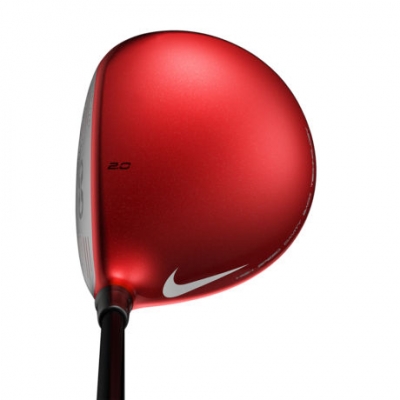 |
One thing of note. This is our first adjustable club from Nike in several years, and the company has adopted more of a “standard” type wrench that you get from other manufacturers, a sizeable improvement over the old Nike wrenches which were bulky and a little cumbersome.
Further, the FlexLoft system allows for plus or minus two degrees of loft (8.5 to 12.5) in the driver, and you can adjust the face angle to three different positions. All in all, pretty standard when compared with other adjustable clubs.
As mentioned above, the High-Speed Cavity Back technology, according to the company, redistributes weight to the heel and toe of the driver head, allowing for increased distance and more stability across the face of the driver.
How is the 2.0 different than the original Covert, you ask?
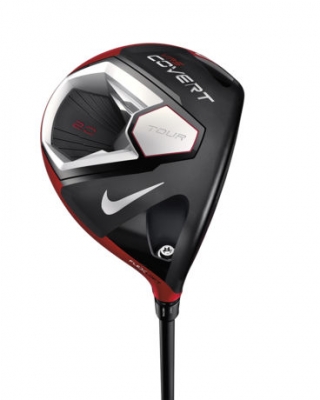 |
Nate Radcliffe, Nike Golf Director of Engineering, answers: “The VRS Covert 2.0 driver features a redesigned cavity with Fly-Brace technology that ties the sole to the crown. By stiffening the rear portion of the club, more energy is transferred to the face at impact. The end result is even greater ball speed and up to six yards of distance gain over last year’s model.”
“It’s similar to an automotive frame design,” Radcliffe continued. “Fly-Brace technology reinforces the rearward portion of the club head to focus impact stress, flexing and subsequent energy transfer to the point of impact.”
In other words, the VRS Covert 2.0 is computer animation at its finest. Can’t you just picture the Nike engineers pouring over a screen and crunching the data? Model building ain’t what it used to be.
Again, according to the company, the VRS Covert 2.0 drivers feature another proprietary technology, that being a larger, re-engineered NexCOR face for increased ball speed and distance. The redesigned NexCOR face incorporates variable face thickness for a faster, hotter face and as a result, more speed at impact.
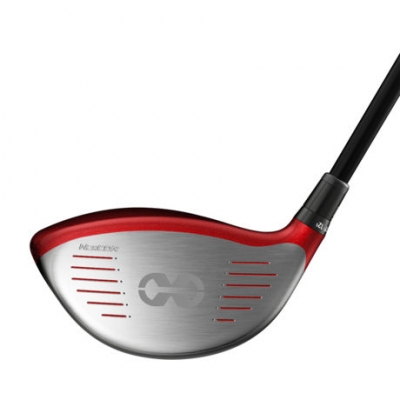 |
It is 15-percent larger in the VRS Covert 2.0 Tour driver, and seven-percent larger in the VRS Covert 2.0 driver.
Hence, more distance and forgiveness.
Switching to the Nike VRS Covert 2.0 Fairway Woods, they’re billed as having lowered the center of gravity in the head, which increases launch angle and reduces spin rate -- resulting in more distance.
Radcliffe expounds. “We worked closely with our athletes to develop tour-authentic fairway woods that were tested and proven in prototype form by our top athletes on tour.”
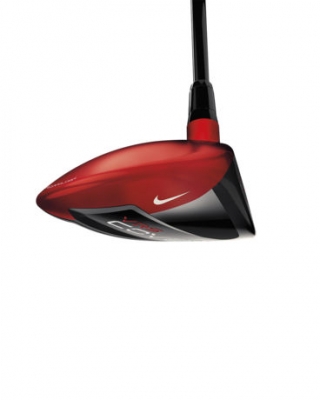 |
“We’ve adjusted the profile and lowered the center of gravity significantly in both the Tour and Performance models. This update resulted in a spin rate reduction of approximately 600 rpm’s, which equals an average of about eight yards of distance gained for the average player.”
The Nike athletes Radcliffe talked about include McIlroy, Kevin Chappell and Nick Watney, amongst others. So Rory had input in the clubs that steered him to victory – now that’s responsiveness on behalf of Nike.
The Fly-Brace design explained above also appears in the fairway woods. The Fly-Brace technology stiffens the chassis to focus flexing toward the variable thickness NexCOR face. The result is a faster, hotter face with higher ball speed.
Just like the driver, the fairway woods also offer the company’s FlexLoft technology, so you can tinker with the fairways as well. It’s interesting to note that a couple degrees of loft change in a fairway wood can make it similar to a driver or even a two-wood. Similarly, you can up the loft on a five wood to make it more like a long-iron.
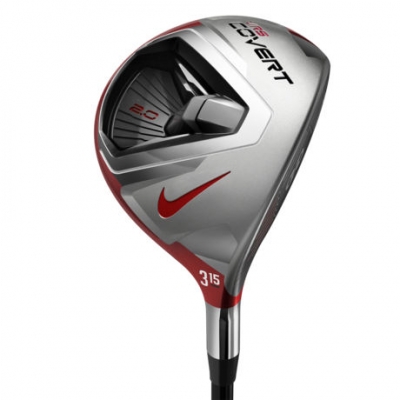 |
That’s turned out to be very helpful for us – giving additional choices on how to use the clubs.
Both the driver and fairway models come standard with the second generation of Mitsubishi Rayon’s Kuro Kage shafts – pretty high quality stuff.
But you’d expect that from Nike, which doesn’t tend to do things at half-speed.
For our test, we tried the Tour models of both the VRS Covert 2.0 driver and fairway woods (the VRS Covert 2.0 fairway woods are not adjustable).
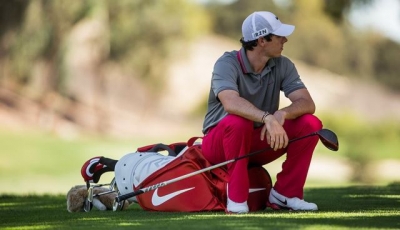 |
The “standard” setting for the driver was causing too low of a ball flight in our opinion, so we upped it to 11 degrees, which seemed to be just right. Likewise, we left the 3-wood at a fairly common 15 degrees, but upped the 5-wood to 21 degrees (more like a 3-iron).
We found the 5-wood easier to hit than a 2 or 3-iron, delivering better distance and the ability to stop the ball quickly.
Distance for the driver was comparable to other high-end drivers. The feel of the driver was above average and because of the adjustability (in face angle as well as loft), it was easy to customize the club.
We don’t scientifically test clubs, and we still would highly recommend that you consult with professionals in fitting them. But we’ll also say that Nike’s system is very easy to “tinker” with, and it adds a little fun to the process.
There are many high quality drivers and fairway woods on the market today and we suggest you try a good selection of them before purchasing. The fact that Rory McIlroy can hit the VRS Covert 2.0 doesn’t mean they’re automatically right for you.
But the results also speak for themselves. McIlroy’s had a great year – and his golf clubs haven’t hurt him one bit.
Details:
Nike Golf’s VRS Covert 2.0 Drivers and Fairway Woods
Available at your higher-end golf retailers and club pro shops.
Check out more information about Nike Golf products at: www.nikegolf.com . Like you’d expect from Nike, the website puts on a good show, too.
Specs:
Nike VRS Covert 2.0 Tour Driver
Specifications: 8.5-12.5º Kuro Kage Silver TiNi shaft; RH/LH: R, S, X
Nike VRS Covert 2.0 Driver
Specifications: 8.5-12.5º Kuro Kage Black HBP shaft; RH/LH: A, R, S, W
Nike VRS Covert 2.0 Tour Fairway Woods
Specifications: 3W: 13°-17° (RH/LH), 5W: 17°-21° (RH/LH)
Kuro Kage Silver TiNi Shaft: R, S, X
Nike VRS Covert 2.0 Fairway Woods
Specifications: 3W: 15° (RH/LH), 5W: 19° (RH/LH)
Kuro Kage Black HBP Shaft: A, R, S, X, W
| Related Links | Comments on this article? | |
|
Maryland National Golf Club Hollow Creek Golf Club Rocky Gap Resort PB Dye Golf Club in Ijamsville Whiskey Creek Golf Club |
E-mail Jeff Rendall, Editor: jrendall@golftheunitedstates.com |












